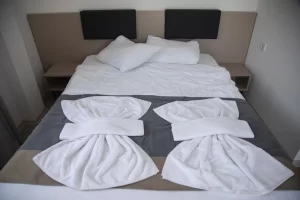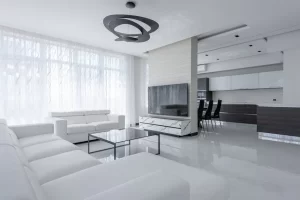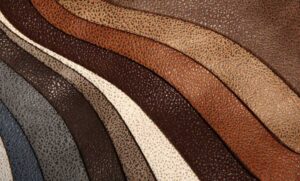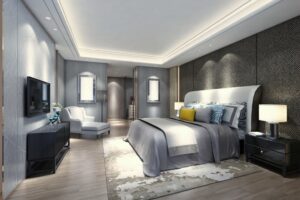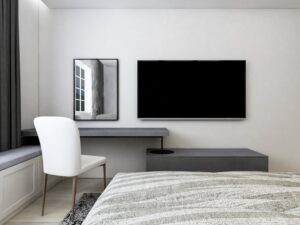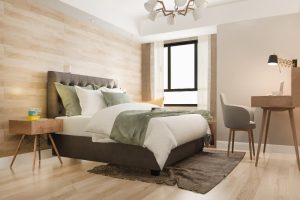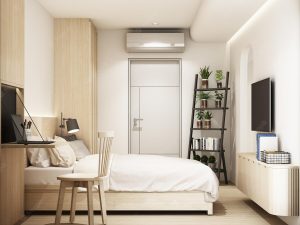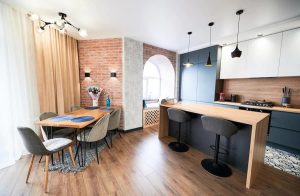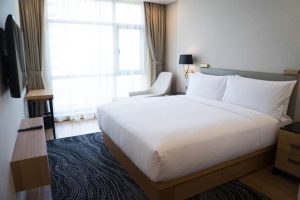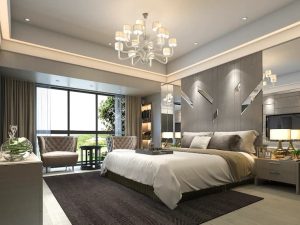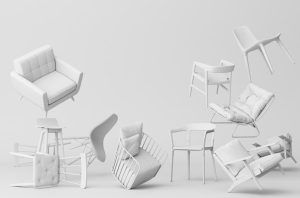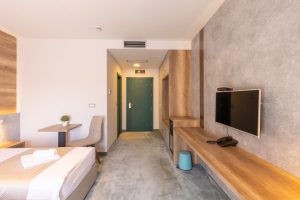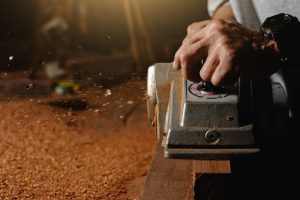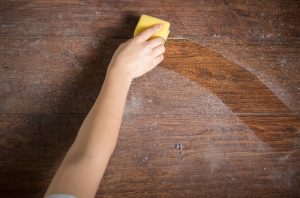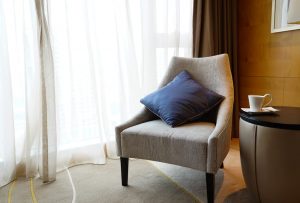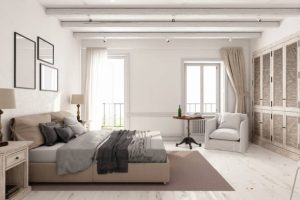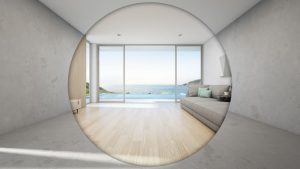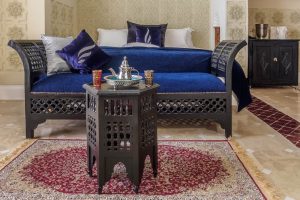In the hospitality industry, hotel furniture quality control is an essential process to maintain durability, safety, and aesthetics. Guests expect not only a comfortable stay but also well-maintained, high-quality furniture. A structured Hotel Furniture Quality Control Checklist ensures that every piece of furniture meets industry standards and enhances the guest experience.
Without proper furniture inspection, hotels may face rapid deterioration, guest complaints, and costly replacements. Implementing a hotel furniture inspection routine is crucial for long-term savings and brand reputation.
This guide provides an in-depth quality control checklist to help hoteliers inspect, maintain, and replace furniture efficiently.
Table of Contents
Toggle- Understanding the Importance of a Hotel Furniture Quality Control Checklist
- Key Factors in Hotel Furniture Quality Control Checklist
- Step-by-Step Hotel Furniture Quality Control Checklist
- Common Hotel Furniture Issues and How to Fix Them
- How to Implement a Hotel Furniture Maintenance Plan
- The Advantages of Custom Luxury Hotel Furniture
- The Importance of Custom Hotel Furniture in Enhancing Guest Experience
- The Ultimate Guide to Finding Top Hotel Furniture Suppliers in Turkey
- Importance of High Quality Furniture in Hotels
- The Impact of Furniture Design on Hotel Guest Experience
- High Quality Furniture in Hotels: Essential for Guests
- The Role of Furniture in Defining Hotel Aesthetics
- The Evolution of Hotel Furniture Design Over the Years
- How to Choose the Right Upholstery for Hotel Furniture
- The Impact of Furniture Design on Guest Experience in Hotels
- Hotel Furniture and Design: Enhancing the Guest Experience
- Premium Hotel Furniture in Turkey: Elevate Your Hotel’s Interior Design
- How Do Hotels Get Furniture in the Rooms | Hotel Solutions
- Hotel Furniture Concept | Perfect Products for Your Hotel
- Top 5 Benefits of Turkish Made Hotel Furniture
- What makes a good faux leather?
- Furnishing an Apartment: 6 Tips for Choosing the Best Furniture
- Types Of Hotel Furniture You Need
- Why Turkish Made Hotel Furniture is the Best Choice for Your Business
- What is fixed furniture?
- Maximizing Your Hotels ROI with High-Quality Furniture Solutions
- Benefits of Custom Made Furniture
- Hotel Furniture Buying Guide
- Where Do I Buy Hotel Furniture in Turkey?
- How to Make a Hotel Room Feel Like Home
- How Often Do Hotels Change Their Interiors?
- A Good Hotel Furniture Manufacturer
- 7 Signs Your that Hotel Needs Renovation
- What Factors Will Affect Hotel Furniture Prices?
- Should I Buy Laminate or Veneer Furniture?
- MDF Cutting Machine
- What are the Basic Furniture Required to Set Up a Hotel?
- What is Crib 5?
- Four Ways to Maintain Hotel Room Storage
- Characteristics of a Custom Hotel Furniture
- Popular Materials for Luxury Hotel Furniture Manufacture
- The Four Characteristics of a Hotel Furniture Design
- 4 Key Considerations for Hotel Furniture
- Hospitality Design Mistakes That Are Common
- Things Your Hotel Furniture Manufacturer Should Provide
- Why we use 3D Renderings in Furniture Design
- Advantages of Custom Hotel Furnitures
- Important Questions to Ask a Potential Hotel Furniture Supplier
- What Are the Guides to Contract Furniture?
- Things to Consider When Choosing a Hotel Furniture Manufacturer
- Wood Veneers and Laminate Casegoods
- Wooden Furniture Care
- What Types Of Wood Are The Best For Your Luxury Sofa?
- Hotel Furniture Cushion Upholstery Care
- Leather Furniture Care; Maintaining Your Hotel Furniture
- Ten Tips for Hotel Lobby Design
- Starland Hotel Cameroon
- Hotel Furniture Turkey
- The Best Hotel Furniture Suppliers
- Hotel Furniture Manufacturers in Turkey
- Four Mistakes While Buying a Restaurant Furniture in Turkey 2021
- Selecting Booth and Sofa Seating Made in Turkey
- 10 Restaurant And Cafe Furniture Ideas From Turkey
- Five Most important Materials in Hotel Furniture Industry
- Hotel Renovations: Luxury Hospitality Furnishings made in Turkey
- How to Maintain Hotel Furniture for 10+ Years
- Commercial VS Residential Furniture Made in Turkey
- Hotel Furniture Manufacturing Industry in Turkey
Understanding the Importance of a Hotel Furniture Quality Control Checklist
A structured quality control checklist ensures that hotel furniture meets industry standards and enhances the guest experience. Without proper inspection, furniture can deteriorate quickly, leading to negative reviews, increased maintenance costs, and even safety hazards.
A comprehensive furniture inspection includes the following aspects:
- Aesthetic appeal – Ensuring furniture complements the hotel’s theme.
- Durability – Checking for material strength and longevity.
- Safety standards – Ensuring no sharp edges, loose parts, or weak joints.
- Functionality – Confirming that furniture serves its intended purpose.
Key Factors in Hotel Furniture Quality Control Checklist
Material Selection and Durability
Selecting high-quality materials is the first step in ensuring durable furniture. When choosing furniture, consider:
- Wood Type: Solid hardwoods like oak or teak last longer than MDF.
- Metal Frames: Stainless steel is rust-resistant, whereas aluminum is lightweight.
- Upholstery: Leather and stain-resistant fabrics are ideal for high-traffic areas.
- Foam Density: A minimum of 1.8 lbs/ft³ for cushions ensures longevity.
Structural Integrity and Stability
To avoid accidents and breakages, furniture must be stable and structurally sound. Inspect:
- Weight-bearing capacity of chairs, tables, and beds.
- Joint reinforcements like metal brackets and dowels.
- Screws, bolts, and welding quality in metal frames.
Aesthetic Inspection
The furniture should match the hotel’s brand identity and interior theme. Check for:
- Consistent finishing on all pieces.
- No visible scratches, dents, or chips.
- Uniformity in upholstery colors and stitching.
Step-by-Step Hotel Furniture Quality Control Checklist
A structured quality control process helps maintain consistency and prevent defects. Here’s a detailed inspection checklist:
1. Initial Material Quality Check
Wood, metal, and upholstery meet specifications.
No visible knots or cracks in wooden furniture.
Upholstery is stain-resistant and free of defects.
2. Assembly & Structural Strength
All screws and bolts are tightly fixed.
Joints are reinforced with brackets or glue.
No wobbling in tables and chairs.
3. Surface and Finishing Inspection
Smooth and even surface without rough edges.
Consistent finishing in all pieces.
No paint drips or discoloration.
4. Functionality Testing
Drawers open and close smoothly.
Reclining chairs and sofas function properly.
Beds and mattresses have even weight distribution.
5. Comfort and Ergonomics
Seating cushions have adequate foam density.
Armrests and backrests provide proper support.
Bed frames do not produce noise when used.
6. Safety Standards Compliance
No sharp edges or exposed nails.
Fire-resistant materials used where applicable.
Electrical furniture (lamps, motorized recliners) is tested for safety.
Common Hotel Furniture Issues and How to Fix Them
Even with a strict quality control checklist, issues may arise. Here are some common problems and their solutions:
| Issue | Cause | Solution |
|---|---|---|
| Loose chair joints | Weak screws or glue failure | Reinforce with metal brackets and stronger adhesive |
| Scratched wooden surfaces | Daily wear and tear | Use touch-up markers or refinish the surface |
| Sagging cushions | Low-density foam | Replace foam with high-density filling |
| Wobbly tables | Uneven legs or weak joints | Adjust legs or reinforce with braces |
| Peeling veneer | Poor-quality laminate | Use a stronger adhesive or replace with real wood |
How to Implement a Hotel Furniture Maintenance Plan
Regular maintenance ensures that hotel furniture remains in top condition. A preventive maintenance plan includes:
- Daily Checks: Housekeeping staff reports visible damages.
- Weekly Inspections: Supervisors test structural integrity.
- Quarterly Deep Inspections: Hotel engineers examine all furniture components.
- Annual Replacements: Budgeting for wear-and-tear replacements.
Tip: Using a maintenance log helps track repairs and replacements efficiently.
The Advantages of Custom Luxury Hotel Furniture
The advantages of custom luxury hotel furniture go beyond aesthetics....
Read MoreThe Importance of Custom Hotel Furniture in Enhancing Guest Experience
A hotel’s ambiance plays a significant role in shaping a...
Read MoreThe Ultimate Guide to Finding Top Hotel Furniture Suppliers in Turkey
Introduction Designing a hotel that exudes comfort and luxury hinges...
Read MoreImportance of High Quality Furniture in Hotels
Why High Quality Furniture Matters in Hotels The importance of...
Read MoreThe Impact of Furniture Design on Hotel Guest Experience
The impact of furniture design in hotels goes beyond aesthetics—it...
Read MoreHigh Quality Furniture in Hotels: Essential for Guests
Introduction to hotel furniture quality High-quality furniture in hotels is...
Read MoreThe Role of Furniture in Defining Hotel Aesthetics
Importance of furniture in the hotel industry Furniture plays a...
Read MoreThe Evolution of Hotel Furniture Design Over the Years
Introduction to hotel furniture design Hotel furniture design has come...
Read MoreHow to Choose the Right Upholstery for Hotel Furniture
Importance of choosing the right upholstery for hotel furniture Choosing...
Read MoreThe Impact of Furniture Design on Guest Experience in Hotels
Importance of furniture design in hotels Furniture design plays a...
Read MoreHotel Furniture and Design: Enhancing the Guest Experience
The design and quality of hotel furniture play a crucial...
Read MorePremium Hotel Furniture in Turkey: Elevate Your Hotel’s Interior Design
Choosing the right hotel furniture in Turkey is crucial for...
Read MoreHow Do Hotels Get Furniture in the Rooms | Hotel Solutions
How do hotels get furniture in the rooms efficiently while...
Read MoreHotel Furniture Concept | Perfect Products for Your Hotel
What are the leading hotel furniture suppliers in Turkey? When...
Read MoreTop 5 Benefits of Turkish Made Hotel Furniture
The benefits of Turkish made hotel furniture go beyond aesthetics....
Read MoreWhat makes a good faux leather?
Faux leather has gained popularity as a cost-effective, eco-friendly alternative...
Read MoreFurnishing an Apartment: 6 Tips for Choosing the Best Furniture
Furnishing an apartment requires thoughtful planning to create a functional,...
Read MoreWhy Turkish Made Hotel Furniture is the Best Choice for Your Business
What are some of the most popular Turkish made hotel...
Read MoreWhat is fixed furniture?
What kinds of furniture are considered fixed? Fixed furniture refers...
Read MoreMaximizing Your Hotels ROI with High-Quality Furniture Solutions
Investing in High-Quality Furniture Solutions is one of the most...
Read MoreHotel Furniture Buying Guide
When setting up or refurbishing a hotel, selecting the right...
Read MoreWhere Do I Buy Hotel Furniture in Turkey?
Finding the right furniture is essential for creating an inviting...
Read MoreHow to Make a Hotel Room Feel Like Home
Staying in a hotel can often feel impersonal, especially for...
Read MoreHow Often Do Hotels Change Their Interiors?
A well-planned hotel interior design plays a vital role in...
Read MoreA Good Hotel Furniture Manufacturer
Selecting a good hotel furniture manufacturer is crucial for creating...
Read More7 Signs Your that Hotel Needs Renovation
Every successful hotel must evolve with changing guest expectations. If...
Read MoreWhat Factors Will Affect Hotel Furniture Prices?
When planning a hotel renovation or new construction, one of...
Read MoreShould I Buy Laminate or Veneer Furniture?
When selecting furniture, one of the most common debates is...
Read MoreWhat are the Basic Furniture Required to Set Up a Hotel?
Setting up a hotel requires careful planning, especially when selecting...
Read MoreFour Ways to Maintain Hotel Room Storage
Keeping hotel room storage well-maintained is crucial for guest satisfaction,...
Read MoreCharacteristics of a Custom Hotel Furniture
Characteristics of a custom hotel furniture shape the overall guest...
Read MorePopular Materials for Luxury Hotel Furniture Manufacture
he selection of popular materials for luxury hotel furniture manufacture...
Read MoreThe Four Characteristics of a Hotel Furniture Design
The characteristics of a hotel furniture design define the overall...
Read More4 Key Considerations for Hotel Furniture
Choosing the right hotel furniture involves more than just aesthetics....
Read MoreHospitality Design Mistakes That Are Common
In the hospitality industry, interior design plays a critical role...
Read MoreThings Your Hotel Furniture Manufacturer Should Provide
Generally, when purchasing furniture for repairs and modifications, you work...
Read MoreWhy we use 3D Renderings in Furniture Design
In the modern furniture industry, 3D Renderings in Furniture Design...
Read MoreAdvantages of Custom Hotel Furnitures
The advantages of custom hotel furnitures go beyond aesthetics. Hotels...
Read MoreImportant Questions to Ask a Potential Hotel Furniture Supplier
Finding a hotel furniture supplier that aligns with your quality,...
Read MoreWhat Are the Guides to Contract Furniture?
When furnishing a commercial space, following the right guides to...
Read MoreThings to Consider When Choosing a Hotel Furniture Manufacturer
Selecting the right hotel furniture manufacturer is a crucial decision...
Read MoreWood Veneers and Laminate Casegoods
When selecting wood veneers and laminate casegoods for hotels, offices,...
Read MoreWooden Furniture Care
Wooden furniture care is essential for maintaining the durability, beauty,...
Read MoreWhat Types Of Wood Are The Best For Your Luxury Sofa?
When investing in a high-end sofa, selecting the best wood...
Read MoreHotel Furniture Cushion Upholstery Care
Ensuring hotel furniture cushion upholstery remains clean, durable, and comfortable...
Read MoreLeather Furniture Care; Maintaining Your Hotel Furniture
Proper leather furniture care is essential for maintaining the luxury,...
Read MoreThe Best Hotel Furniture Suppliers
What are the most ideal options for hotel furniture suppliers?...
Read MoreHotel Furniture Manufacturers in Turkey
Hotel furniture manufacturers in Turkey aim to meet the furniture...
Read MoreFour Mistakes While Buying a Restaurant Furniture in Turkey 2021
Have you ever spent hours fussing over the missing links...
Read MoreSelecting Booth and Sofa Seating Made in Turkey
When selecting booth and sofa seating made in Turkey, it...
Read More10 Restaurant And Cafe Furniture Ideas From Turkey
Furniture designs are one of the best ways to satisfy...
Read MoreFive Most important Materials in Hotel Furniture Industry
In the hotel Furniture manufacturing industry, several materials help the...
Read MoreHotel Renovations: Luxury Hospitality Furnishings made in Turkey
Hotel renovations are often corrective and can be for several...
Read MoreHow to Maintain Hotel Furniture for 10+ Years
Investing in hotel furniture is a long-term commitment, so knowing...
Read MoreCommercial VS Residential Furniture Made in Turkey
The global furniture market has been witnessing a steady transformation,...
Read MoreHotel Furniture Manufacturing Industry in Turkey
The hotel furniture manufacturing industry in Turkey has been gaining...
Read More





